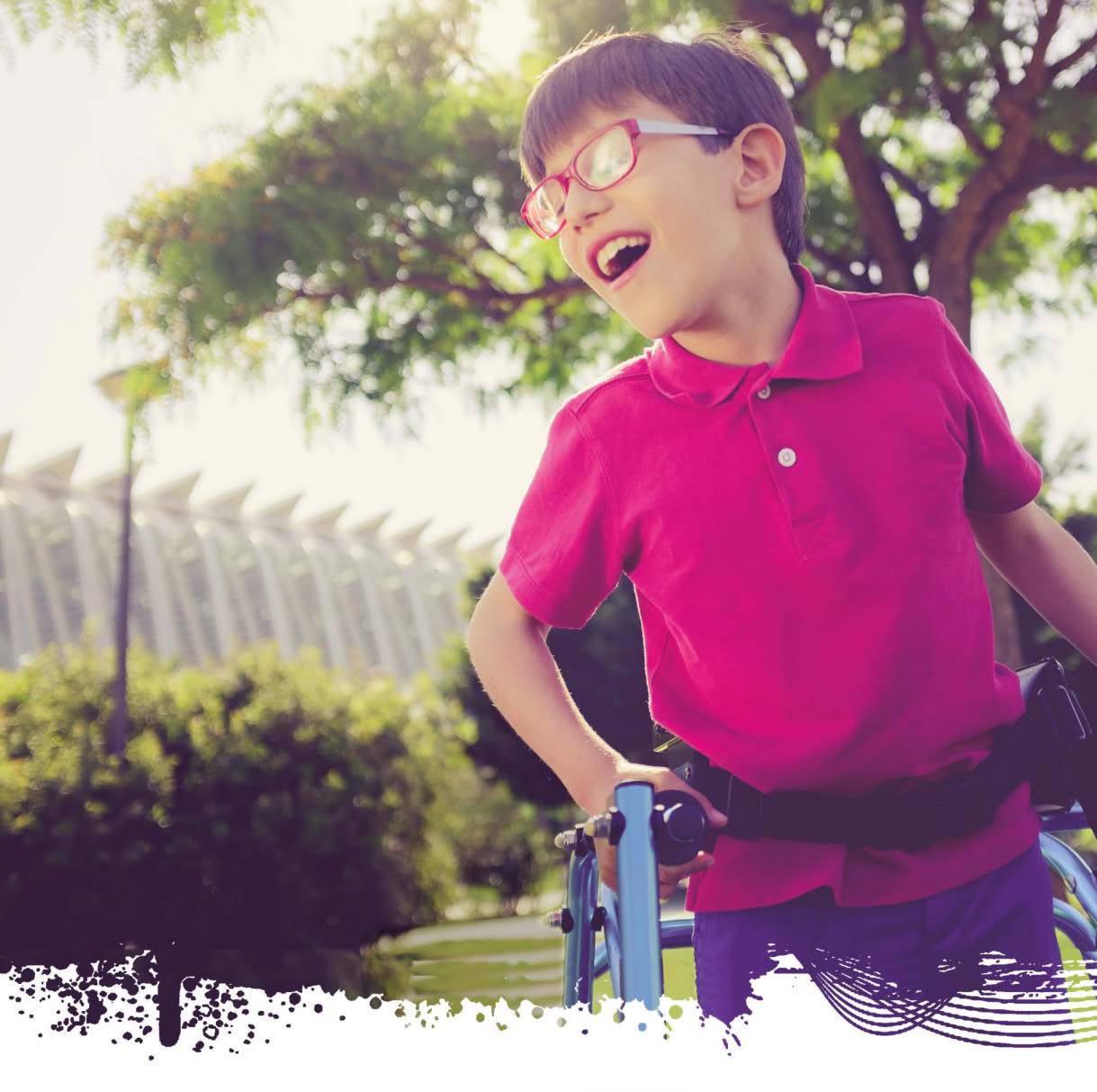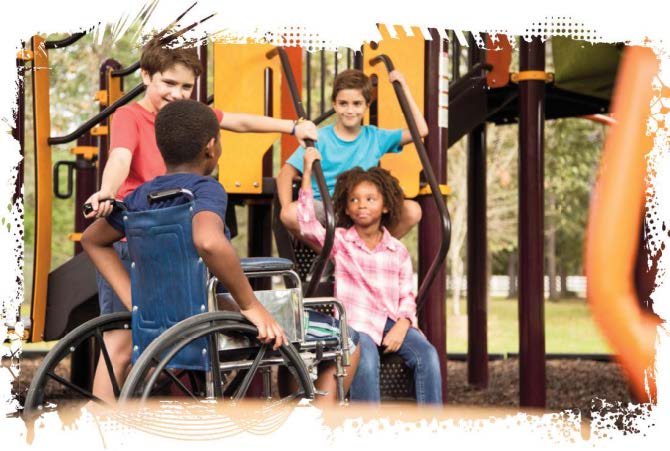

WHAT PARKS AND PLAYGROUNDS CAN OFFER YOUR CHILD
Summertime is the optimal season to take advantage of the parks and playgrounds in your area. The weather is great, school's out, and hopefully you can snag a day or two out of the office to enjoy the outdoors and the multitude of benefits these spaces can provide for you and your child. Playing outside and having the chance to interact with nature in some capacity is something that all children can find rewarding.

OUT AND ABOUT: Like anyone else, children with disabilities and special needs benefit from time spent outdoors. Plus, the chance of social inclusion may be greater at public playgrounds and parks than at school since children with disabilities are often in specialized classrooms that take recess at different times than the rest of their peers.
As the accessibility of communal outdoor spaces expands, summer is a great time to play in and explore the options available in your neighborhood or region. The emotional and physical health benefits of outdoor exposure are numerous, including but not limited to enhancing mood, alleviating stress, and strengthening social skills.
Through exploration with the natural environment, children develop their judgment skills by interacting with new people and learning how to navigate unfamiliar areas, all while reaping the benefits of physical activity. Exploring the outdoors and using playgrounds may not be thought of as an easy task for children with disabilities, whether those disabilities are cognitive or physical. However, with the help of paved paths throughout many national and local parks, ramps for easy access onto playgrounds, the inclusion of sensory activities, and quiet refuge areas for children who need a break from stimuli, these outdoor environments are gradually improving.
Since children today are much more OUT AND ABOUT: Like anyone else, children with disabilities and special needs benefit from time spent outdoors. Plus, the chance of social inclusion may be greater at public playgrounds and parks than at school since children with disabilities are often in specialized classrooms that take recess at different times than the rest of their peers. sedentary than their counterparts of even 20 years ago, it is important to schedule this time outside, ideally, for at least an hour a day. Utilizing local green spaces is a good way to minimize sedentary and isolating indoor activities such as TV-watching and computer use over the summer. For children for whom physical activity isn't an option, the act of just being present outside can boost their mood. Exposure to nature is linked to decreased levels of stress, anxiety, and aggression, emotions with which children with cognitive impairments like autism or attention deficit disorder often struggle. A Harvard study found an association between time spent outdoors in parks and playgrounds, time spent partaking in physical activity, and increas es in mental health.1 Other evidence points to the mood-boosting effects of time spent outside, showing that outdoor exposure has the potential to reduce psychological and physiological stress in children and adolescents. Results from a Stanford research study indicate that health benefits gained from walking depends on one's surroundings: participants who walked in nature saw a greater decrease in relative feelings of depression and rumination (the act of focusing upon your own distress), compared to those who walked in a busy city area.2 Therefore, time spent outdoors, specifically in a natural environment, is important for being able to unwind and focus on positive thoughts. For children with disabilities, in addition to these benefits, these spaces can also decrease social isolation and improve fine and gross motor skills.3
Another noteworthy benefit that comes from time spent outside is the opportunity for interactions with other individuals besides immediate family members, which can promote a child's social skills and communication development. Those with disabilities are known to be more likely to spend time playing with their parents than with other children, when compared to children without disabilities.4 The chance of social inclusion may be greater at public playgrounds and parks than at school; oftentimes, children with disabilities are in specialized classrooms and may take recess at different times than the rest of their peers. This separation, while beneficial in some respects, can reinforce the "othering" of those with disabilities in society, since children with and without disabilities don't have the chance to interact together at school. The presence of children with disabilities in these places fosters social skills development for children both with and without disabilities. Increased visibility within the community of individuals with varied learning styles, of individuals with varied learning styles, modes of socializing, and physical abilities can stimulate acceptance, tolerance, and knowledge of diversity among people in non-disabled children, leading to more accepting adults as they grow older.5
In recent years, the outdoors and outdoor play have become more accessible than ever, thanks to the Americans with Disabilities Act (ADA) and efforts from advocacy groups. One way the United States has gone about increasing accessi bility is by offering those with permanent disabilities free, lifelong national parks passes, which include admission for those who enter in the same car as them. Such programs can lead to incredible experiences and memories for the entire family. Still, there are some limitations to exploring the outdoors and playgrounds. Not all parks are accessible or inclusive at this point, even with ADA standards in place. Often, the regulations are not clear, and lack of funding makes it difficult for cities to update and maintain their equipment or trails. While progress continues to happen incrementally, proximity of accessible and

inclusive parks remains an issue for many families. The websites below can help you locate parks and playgrounds nearby and learn what features they offer in terms of accessibility and inclusion: ● playgroundsforeveryone.com ● traillink.com/activity/wheelchair-accessible-trails ● tripsavvy.com/national-parks-for-disabled-visitors-3361905
Children with disabilities and special needs, like anyone else, benefit from time spent outdoors. As the accessibility of communal outdoor spaces expands, summer is a great time to play in and explore the options available in your neighborhood or region. The emotional and physical health benefits of outdoor exposure are numerous, including but not limited to enhancing mood, alleviating stress, and strengthening social skills. The presence of children with special needs in parks and playgrounds also carries the potential to enrich the outdoor experiences and interactions of children without disabilities, fos tering connections outside of the school environment. The great outdoors is calling—see what it has to offer you and your family. •